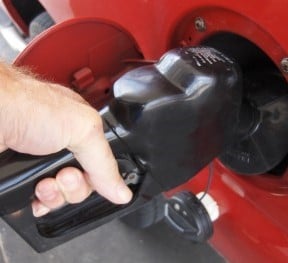The Low Down on Gas Treatments for Cars
Let’s say you’re in a local auto parts store or even your local Walmart. Chances are that store has a shelf lined with bottles of gas treatment....
2 min read
Erik Bjornstad : Oct 25 2016

It wasn’t until 1996 that detergents started being required in gasoline. Before that time, you had a lot more engine deposits because the gasoline didn’t contain anything to keep the engine clean.
 Detergents are important because they keep fuel system parts clean and prevent the buildup of carbon deposits on areas like injectors, intake valves and combustion chamber surfaces. These deposits are linked to substantial problems - they can disrupt proper airflow, affect fuel/air ratios, reduce fuel economy, give you incomplete combustion, and increase vehicle emissions. All problems that can end up costing you money.
Detergents are important because they keep fuel system parts clean and prevent the buildup of carbon deposits on areas like injectors, intake valves and combustion chamber surfaces. These deposits are linked to substantial problems - they can disrupt proper airflow, affect fuel/air ratios, reduce fuel economy, give you incomplete combustion, and increase vehicle emissions. All problems that can end up costing you money.
To combat this problem and try and clean things up, the EPA in 1996 created a minimum standard for detergency in gasoline. They called it the LAC – the lowest additive concentration. This was a huge step in the movement to cleaning up the environment. While this was much better than the previous situation (i.e. better than nothing), some automakers felt that this LAC standard didn’t go far enough to reduce intake valve deposits.
Fast forward to 2004, and you have the creation of the Top Tier designation as a higher standard of detergent concentration in gasoline. A bunch of major automakers like Honda, Ford and Toyota got together and came up with new recommendations on higher minimum amounts of detergents to go in gasoline. They all felt this would do a much better job of accomplishing the original goal of requiring detergents in gasoline in the first place. And research shows that it works.
Groups like AAA have since conducted studies on Top Tier gasoline in comparison to gasolines with only the lowest additive concentration, looking to see if it really does make a difference. The results of their studies, running both kinds of gasolines through standardized driving patterns and then measuring any deposits formed, show that Top Tier gasolines reduce the formation of engine deposits by 19 times.
That’s a huge difference, one that leads AAA to conclude that using gasoline that is non-top tier can actually cost you money by reducing your fuel economy by up to 4%. So it’s pretty clear that detergent levels in gasoline do make a measurable and meaningful difference. Yet only 12% of drivers choose gasoline because of what they know about the detergents in the gasoline. This must mean that the majority of drivers don’t really know what the difference is.
The moral of the story here is that Top Tier gasolines are worth using. But if you’re not sure about where to find them, or you don’t want to switch from your local station that you’re used to buying from, the alternative is to treat your gasoline with a fuel additive that contains an added detergent package. Either way, your engine (and your wallet) is sure to thank you.

Let’s say you’re in a local auto parts store or even your local Walmart. Chances are that store has a shelf lined with bottles of gas treatment....

When you’re asking the question ‘how do I fix bad gas in my car’, you’re talking about a different kind of situation than fixing bad stored fuel...

Fuel stabilizers are big business for diesel fuel, but may not appear to be so important in gasoline. But gasoline is still petroleum and still...